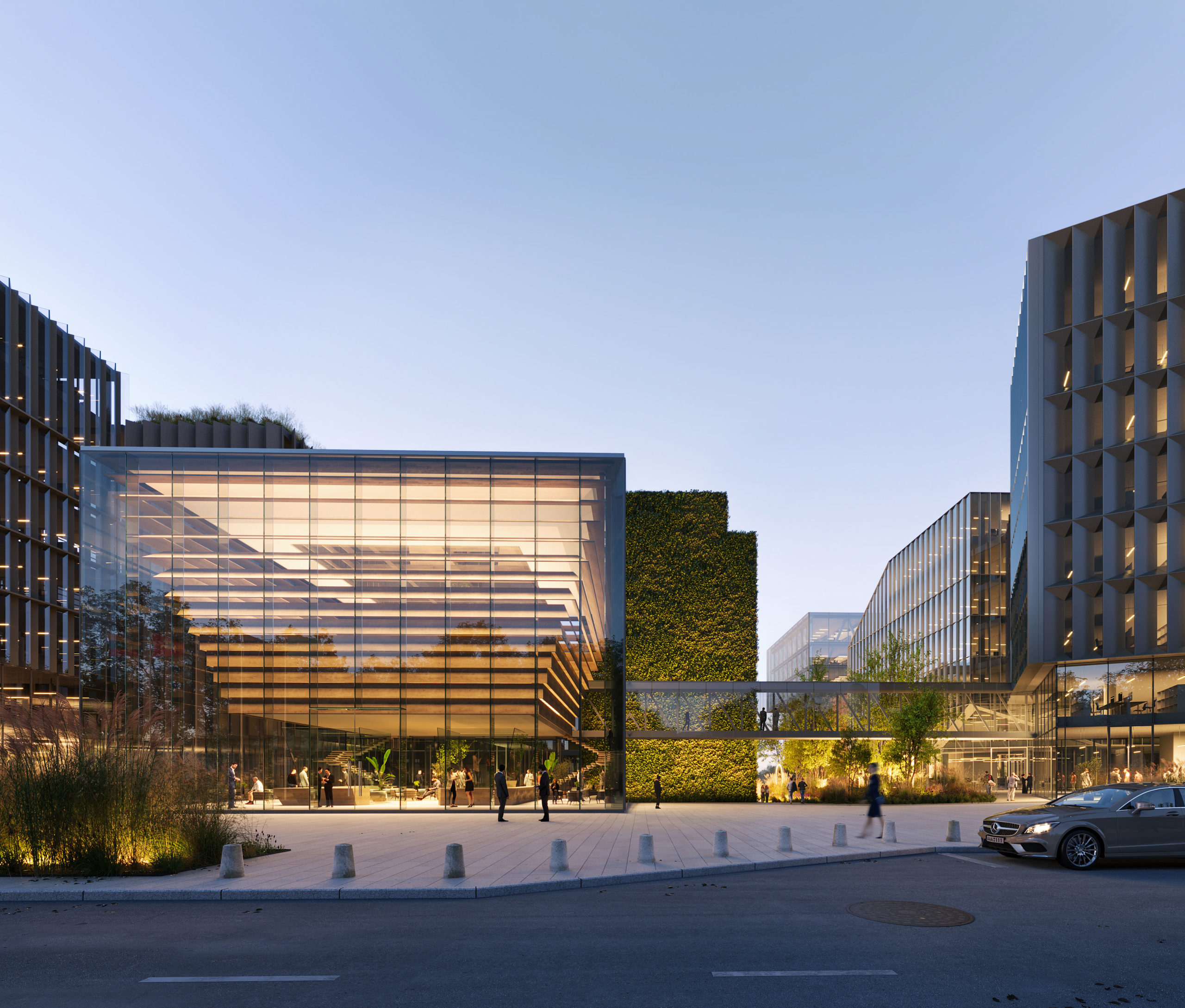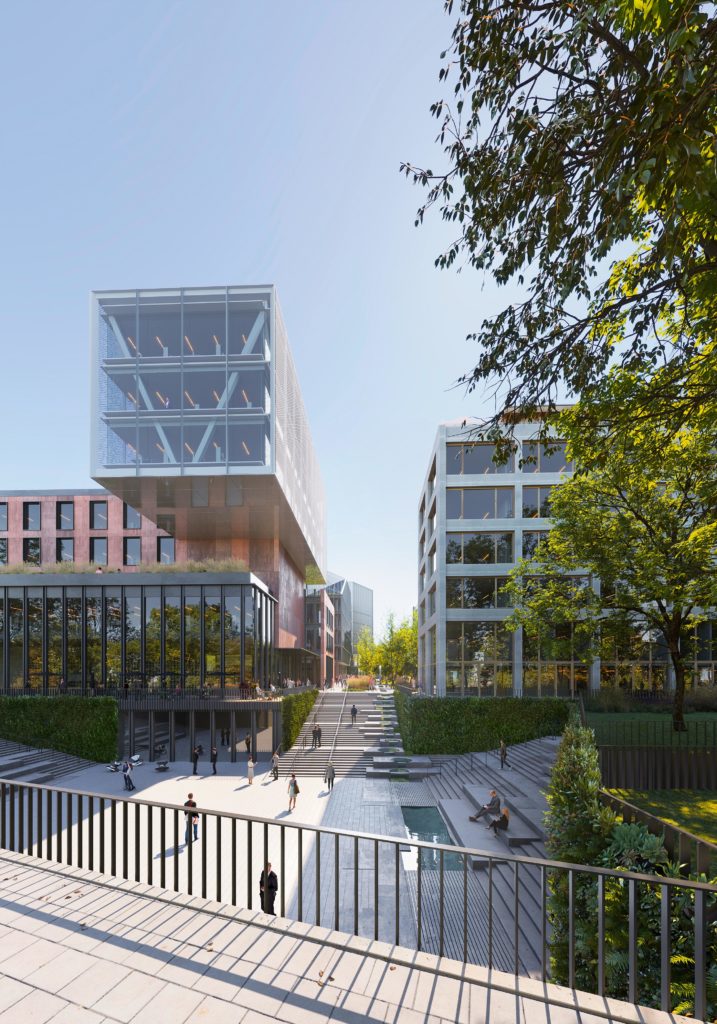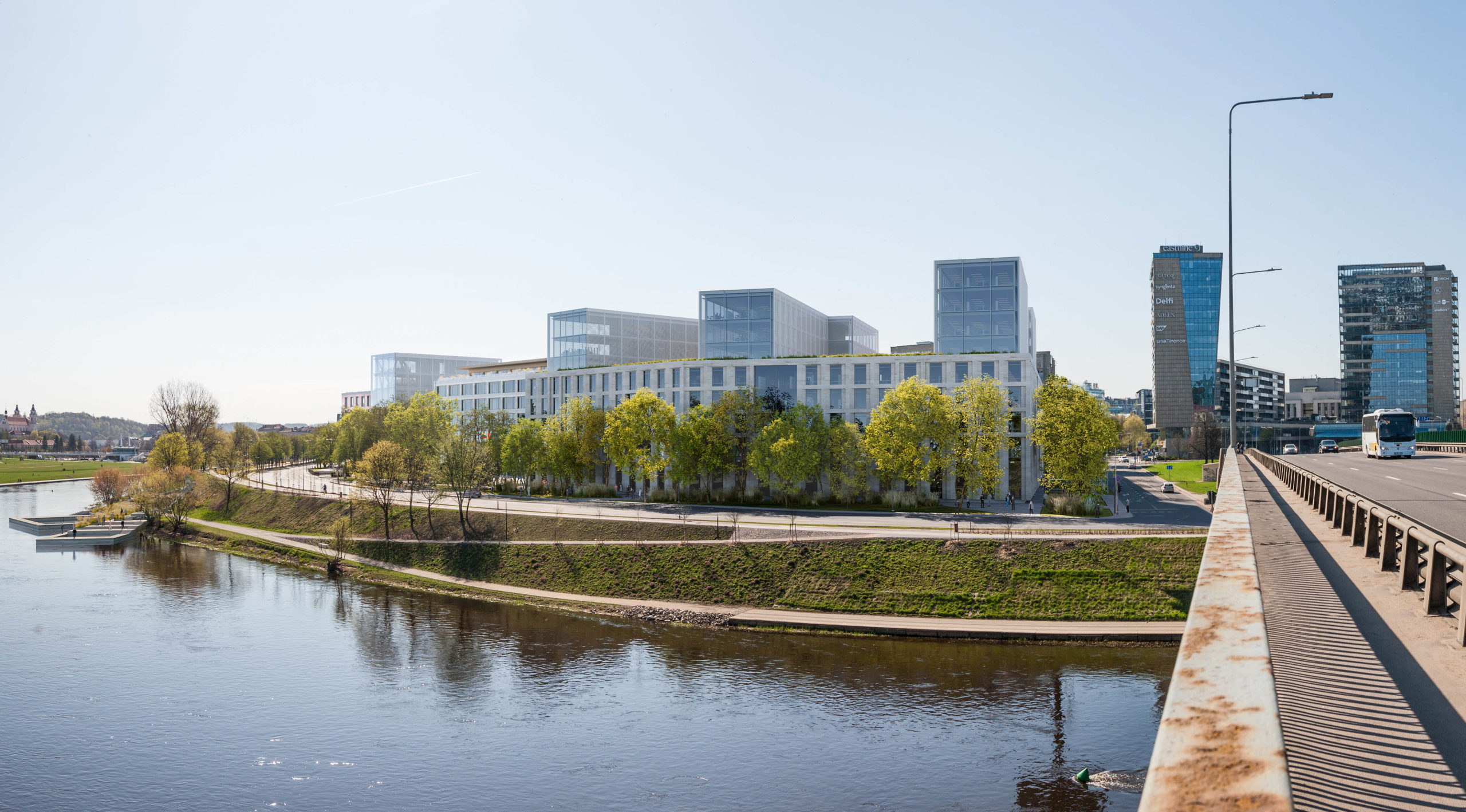Sun&River
Sun&River
The existing context is an integral part of urban approach. The aim of the urban concept is to create a public space that is open, transparent, easy to access and has human scale proportions. Two main public spaces are designed. In the southern side – an urban place that organises urban flows, on the northern – a space that is developed as a connection. In addition the North side square is improved with a physical underpass connection with Neris river.
- Location
- Vilnius
- Type
- Public
- Client
- The Government of Lithuania Republic
- Authors
- Edgaras Neniškis
- Arūnas Liola
- Rolandas Liola
- Greta Vasiliauskaitė
- Emilija Minikavičiūtė
- Kirilas Smotkin
- Jonas Rimeika
- Liucija Rutkauskaitė
- Žilvinas Urbas
- Eglė Daunoraitė
- Visual
- noisyowls


The resulting site areas are organised in North-South meridian directions. This guarantees good building insulation orientation and correlates well to the Neris river. The inner connections work as “green corridors” – visual perspectives that allow visibility of the river delta. The plot is designed using the “external river” water management concept. Rainwater collection system is established in external site elements. This unveils the topography of the site, adds water, reflections, sound and downstream feeling to the in-between spaces.
Local areas are designed with various historical or functional character. The former historical Lukiškės street is marked with a new development. A new landmark is placed in the centre of a square. The building’s main hall and conference hall reflect open representative spaces. Mečetės street is proposed to create street perimeter. A.Goštauto st. and Geležinio Vilko st. proposal addresses the existing buildings and integrates their footprint/structures in the new urban plan. Various valuable natural elements and the contour of the former Lukiškės tatar cemetery is preserved.



New public spaces are created with links to surrounding attractions. Newly designed pedestrian and cycle routes integrate into and complement the existing structure. There is the possibility to create a pedestrian and cycle bridge connecting to the right bank of the river. The newly formed spaces would be more accessible to a larger number of people. Taking into account the needs of the main people flows, two squares and a lively and comfortable connection between them are organised. Between them new recreational spaces, new green spaces and development of existing spaces.